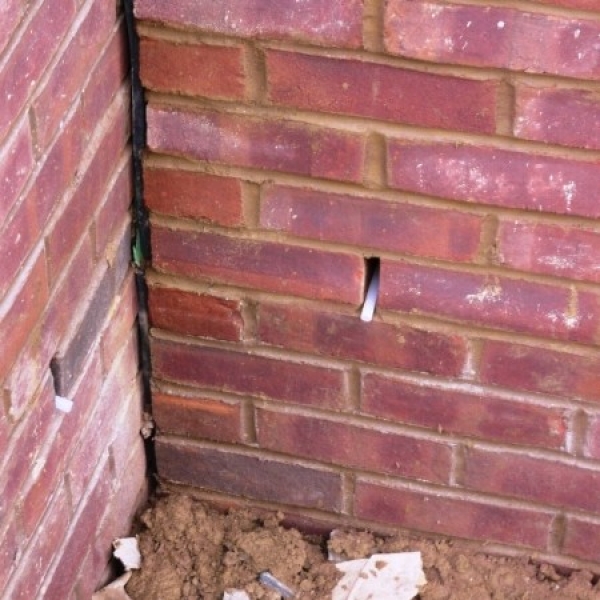Masonry Accessories
Masonry accessories include materials incidental to masonry construction, including control and expansion joints, concealed flashing, drainage materials, weeps, and vents.

†
†
†
†
†
Topic Summary
Movement joints allow for expansion and contraction of masonry due to temperature and moisture changes. Joints also must be provided to accommodate the differential movement of materials. These movement joints are often called expansion joints in brick and control joints in CMU. Movement joints need to be located at regular intervals and in locations where they can help prevent cracking at corners, offsets, and embedded columns. Premolded rubber or PVC control-joint material may be used to provide a vertical control joint while maintaining lateral stability of the wall. Proper performance of sealants and joint fillers requires that joints be sized at least twice as wide as the anticipated movement.
The purpose of masonry flashing is to direct water out of masonry wall construction to the exterior. Materials used for flashing include metals, composite membranes, and plastic or rubber sheets. Flashing must be able to form a water-penetration barrier and be easily bent or formed to required shapes. The choice of flashing material must take into consideration effectiveness, durability, ease of installation, and installed cost. Failed flashings are extremely expensive to replace. Selection of a high-quality flashing material is good insurance against failure.
Copper and stainless-steel sheet metal are considered the most durable flashing materials; however, they also have the highest initial cost. Composite or plastic flashings are less costly, but are more easily damaged and require more care in handling during installation. Composite flashings offer a compromise of a thin layer of metal, typically copper, with a backing of less expensive asphalt-impregnated fabric or asphalt coating.
Self-adhering rubberized-asphalt flashing consists of a polyethylene sheet with a heavy coating of modified asphalt. Seams are easily made by overlapping the material and pressing it together. It cannot span the gap within masonry cavities without additional supporting material, should not be exposed to high heat or sunlight, and is not compatible with many sealants.
Elastomeric plastic flashing made from an alloy of PVC and containing fiber reinforcement is available with or without an adhesive coating and with preformed corners, end dams, and other special shapes. Plastic flashing made of unreinforced PVC is not widely recommended because of the potential for brittle cracking as the material ages.
EPDM flashing is a synthetic-rubber material commonly used for membrane roofing, waterproofing, and many other applications. EPDM requires special adhesives or seam tapes. Weeps must be located at the bottom of masonry cavities, just above flashing, to conduct moisture from the cavity and to provide ventilation. Weeps may be formed by leaving the mortar out of head joints, by inserting aluminum or plastic tubes, or by placing a short piece of cotton rope in the joint. Manufactured weeps are usually screened or have only small openings to prevent insects from getting into them and may be painted to match the mortar joint.
Cavity drainage material helps prevent mortar droppings from accumulating at the bottom of the wall cavity and maintains a continuous drainage path to the weep holes. Pea gravel was once widely used for cavity drainage, but plastic netting material has proven to be more effective and is easier to use.



